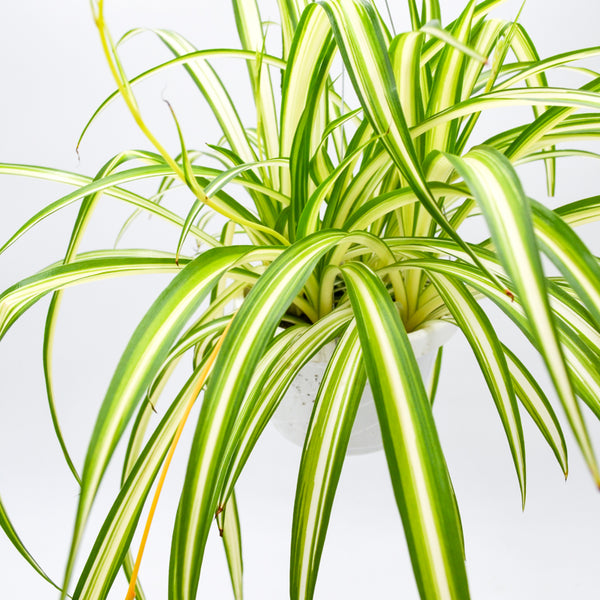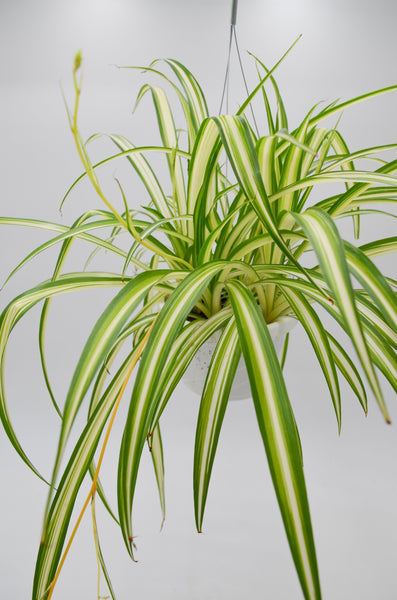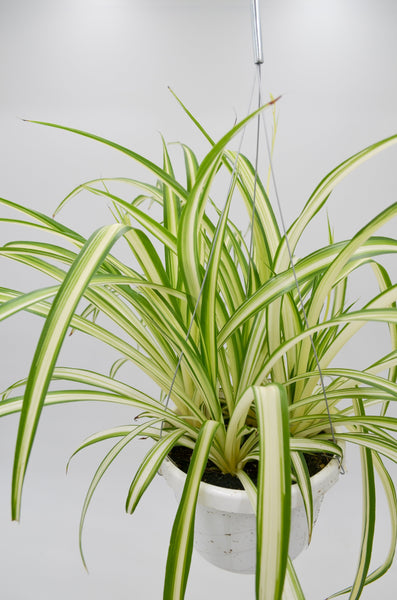Spider Plant (Chlorophytum comosum)
Spider plants (Chlorophytum comosum) are popular, low-maintenance houseplants known for their long, arching leaves and small plantlets that dangle from the mother plant, giving it the appearance of a spider. They are excellent for purifying indoor air and are perfect for beginners. Follow these care instructions to keep your spider plant healthy and thriving:
-
Light: Place your spider plant in a location with bright, indirect light. While it can tolerate low light conditions, the variegation on the leaves may become less pronounced. Avoid direct sunlight, as it can scorch the leaves.
-
Water: Water your spider plant when the top 1-2 inches of soil feels dry to the touch. Water thoroughly until it drains from the bottom of the pot, and then allow the excess water to drain completely. Avoid overwatering, as this can lead to root rot. Spider plants prefer slightly moist soil but can tolerate short periods of dryness.
-
Humidity: Spider plants can tolerate average indoor humidity levels. However, they will appreciate a boost in humidity, especially during dry winter months. To increase humidity, you can place a tray filled with water and pebbles underneath the pot, mist the leaves occasionally, or use a humidifier.
-
Temperature: Maintain a temperature range of 60-75°F (15-24°C) for optimal growth. Spider plants can tolerate a range of temperatures but avoid exposing them to temperatures below 50°F (10°C) or sudden temperature changes.
-
Fertilizer: Feed your spider plant with a balanced liquid fertilizer every 4-6 weeks during the growing season (spring and summer). Use a half-strength solution to avoid over-fertilizing. Reduce feeding to once every 2-3 months during fall and winter.
-
Pruning: Pruning is generally not necessary for spider plants, but you can remove any yellow, brown, or damaged leaves as needed. Use clean, sharp scissors or pruning shears to make a clean cut at the base of the leaf.
-
Repotting: Repot your spider plant every 2-3 years or when the roots outgrow the pot. Choose a well-draining potting mix and a pot that is 1-2 inches larger in diameter than the current one. Be gentle when handling the roots, and water the plant thoroughly after repotting.
-
Pest control: Spider plants can occasionally attract pests such as spider mites, mealybugs, and scale insects. Treat any infestations with insecticidal soap or neem oil, following the manufacturer's instructions.
Pet-friendly or toxic to pets?
According to the ASPCA, spider plants (Chlorophytum comosum) are considered non-toxic to both cats and dogs. While ingestion of any plant material can cause mild gastrointestinal upset in some pets, the spider plant is generally safe to have around your furry friends. However, it's always a good idea to discourage pets from chewing on plants and to monitor them for any signs of distress after ingesting plant material.






